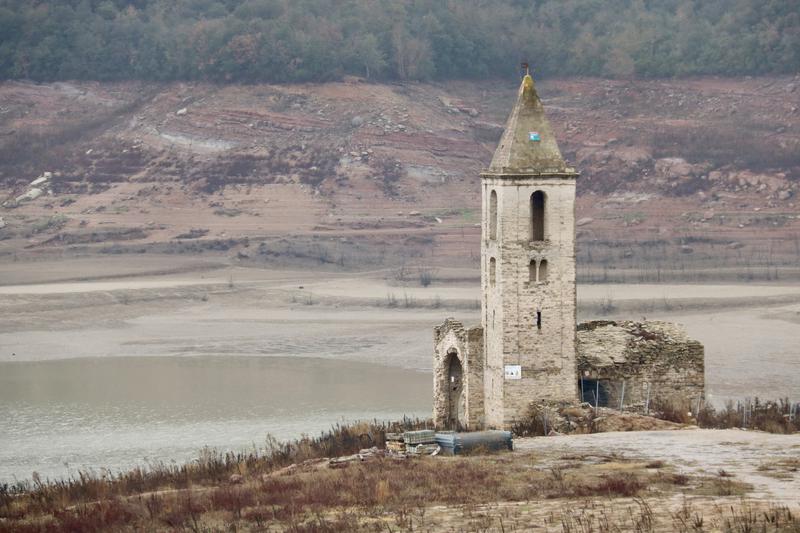Rain brings slight relief to Catalan reservoirs amid severe drought
Volume of water in reservoirs in internal basins increases by three-tenths of a percentage point

Reservoirs in Catalonia have experienced a slight increase after the heavy rains this weekend. The total volume of water in the internal basins' reservoirs increased by three tenths of a percentage point, from a low of 14.41% to 14.77%.
The internal basins' reservoirs of Catalonia include all the reservoirs of the rivers that discharge their waters directly into the Mediterranean sea, without passing through the river Ebre.
The increase from Saturday's showers marks the highest daily increase in nine months since June 2023. Between 30 and 60 liters per cubic meter fell in a large part of all the river basins within Catalonia.
The Sau reservoir, in central Catalonia, where a normally sunken village has resurfaced due to the drought, reached 2.15% of its capacity, almost double what it was last Friday.
However, the combined water level in the reservoirs of the Catalan river basins remains below 16% of its capacity, the lowest volume recorded before this episode and the one that marked the beginning of the drought emergency in February.
The flow of rivers controlled by the Catalan Water Agency (ACA) also jumped to levels not seen since June last year, with a combined flow of 107 cubic meters per second, compared to 36 cubic meters per second before the rains.
Catalonia suffers worst drought on record
Catalonia is going through its worst drought in history. Since the fall of 2020, rainfall has been far below normal and the region has accumulated a rainfall deficit of around 500 mm, equivalent to Barcelona's average annual rainfall.
Last month, the Catalan government officially declared a drought emergency in the Ter-Llobregat system, which supplies water to 6 million people. The new restrictions were implemented in 202 municipalities, including Barcelona and its metropolitan area, where most people in Catalonia live.
In this area, the maximum amount of water allowed per person per day was reduced to 200 liters, 10 liters less than before. In agriculture, irrigation was reduced by 80%, and livestock water use was cut in half. Water use for industrial and urban purposes was reduced by 25%.
Water use for recreational activities is prohibited, with some exceptions. Irrigation of public or private gardens will be allowed only if groundwater or recycled water is used to ensure that urban trees remain in good condition for pedestrian safety.
Similarly, sports facilities can irrigate their fields with recycled water, but must take compensatory measures such as closing showers.
Indoor and public pools, as well as outdoor pools used year-round for sport clubs, may be partially replenished if the water used is offset by water conservation measures.